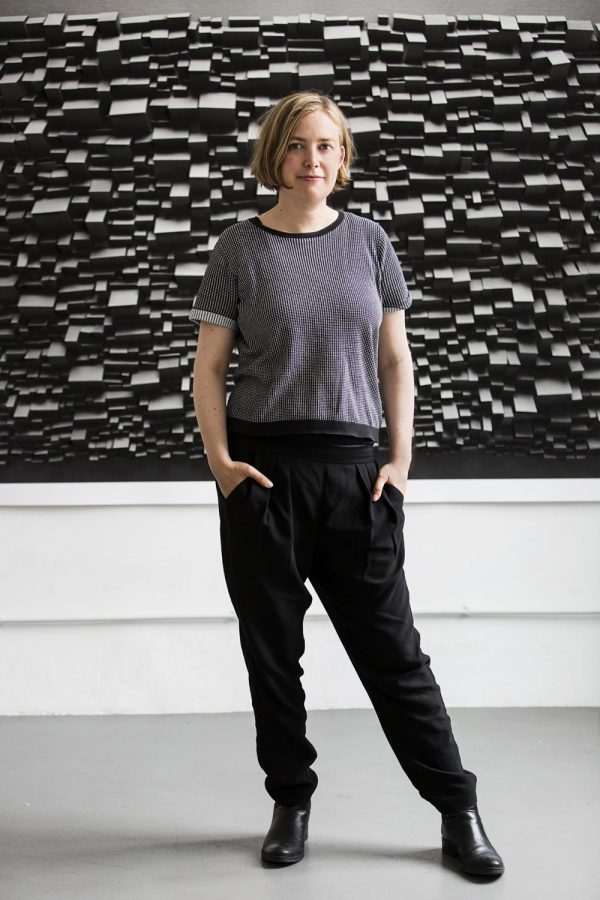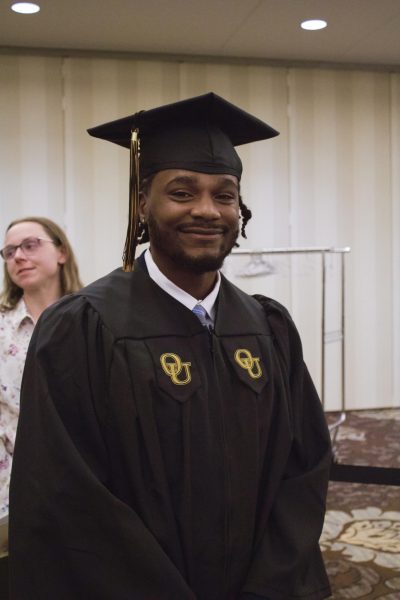German artist gives insight about her work and technique in photography
On Wednesday, Jan. 18, Oakland University’s Art and Art History department hosted a virtual art lecture featuring German artist Christiane Feser.
Christiane Feser presented her lecture live from her studio in Frankfurt, Germany. Displaying a presentation titled “Streets, Folds, Objects, and more.” The presentation walks us through her creative projects dating back to 2003 and ending in the present day.
Feser was born in Würzburg, Germany, in 1977. She studied photography at the Offenbach University of Art and Design in Germany. Feser recently had a retrospective of her career to date at the Opelvillen, Rüsselheim, Germany and was included in the 2018 exhibition “Cut! Paper Play in Contemporary Photography” at The J. Paul Getty Museum in Los Angeles, CA.
“It’s very different to see a scene through a mechanical apparatus with one lens, then two eyes with human protection and experience,” Feser said.
Feser says that this project helped her form an artistic approach in a profound way and took these photos while studying at Offenbach University. She’d get her dog and they would drive outside the town and explore nature.
“A photographic approach — not to look for the special, but to concentrate on ordinary houses or streets and enable a new seeing of those typical houses,” Feser said.
When looking at these houses, she viewed them with the eye of a photographer, looking for something interesting within them. She realized that the simplicity of the houses was the beauty that she was looking for. Once she found her muse, she had to figure out a way to capture it in the same way she viewed it.
“A pure form of an object is best received when there is a clear and clean surface,” Feser said. “If the surface is full of ornaments or other visual elements, it distracts the gaze from the form, so to emphasize the surface I did three things.”
She photographed them when the sky was grey, so there wouldn’t be any shadows, she shot from a higher perspective, so that the road would take up more space and composition and she manipulated the houses by removing the windows.
Feser had her first exhibition with these works, and visitors talked to her about the strangeness of the atmosphere that they felt while looking at them. They discussed with her that the photos express the oppressive feelings they experienced while walking through those areas with the post-war architecture.
Feser began this project four years later as a recent graduate from university, which meant that there was more time on her hands. Feser wanted to start from scratch and look at the basic elements of a photographic image, so she asked herself what the main ingredients were and found that light, shadow and material were all she needed.
She was in search of a material to use and found the most simple material of a photograph is paper. Feser needed a shadow for this piece, so she folded the paper, turning it into an object. She would fold it, but not like origami and not as if she was going to toss it in the trash. To keep the elements, the same Feser used the same paper and controlled light every time she shot.
She then attached photos together in search of a connection between them and combined them in a way that looked real and natural. She would refer to this piece as a digital collage, but says that the process has something in common with drawing and painting, because at the end there were multiple layers to her piece.
The result was exposed on photographic paper and so it was perceived by the audience as photography. By the end, the image depicted that no real material could ever be folded in one piece and create such a complex landscape of connected things.
After two years, she moved on from her previous project and find a new approach. Feser found that moving on wasn’t easy because of her familiarity with limited materials and forms. So she did something different, but it was still created in a similar way.
“The outcome is no longer an all over structure, but it was an assembly of an object in real space,” Feser said.
Latente Konstrukte/Latent Constructs 2011- Present
Feser found this project to be artistic liberation. She wanted to make photos that would show an abstract minimalistic composition that wasn’t connected to one thing or situation in the outer world, just like photographs. She says that photographs can’t be read or understood.
Feser began by taking a photo of the paper composition, printed it out and used the print as a background for the next composition, which would get photographed again. The process continued several more times.
She used different elements in each step, causing the use of materials and techniques to connect inside of the composition. Feser realized how much more reactive these were to the human gaze.
“I had so much fun experimenting with these possibilities, and the work that came out looked very different from each other,” Feser said.
Partitionen/Partitions 2013- Present
This series is the largest body of work that Feser has completed so far. With this project, she wanted to explore the possibilities of the open surface and how this impacts the image and the observer.
A simple paper form was used for composition, and it got photographed.
“It isn’t the paper form that is interesting to me — It is the camera’s perspective in combination with the light that causes the interesting and often surprising transformation,” Feser said.
The print of the picture is the starting point of the project. While it’s hanging on her wall, she decides what she can do with it. Sometimes she’ll cut the paper open, attach paper to it, or mix prints of the same photograph.
“It’s the controlled light that transforms these pieces,” Feser said.
Nullpunkte/Zero Points 2016 – Present
Feser takes us through her latest series and came to the idea by looking at the Greek origin of photography. The Greek meaning is drawn by light. She feels as though this is a good description for her pieces of work, because they’re all about linear shadows that get captured by the pins she used for the project.
“My focus is on the shadows and how they relate to each other, while I attach one thing after the other,” Feser said.
Feser explains she likes to work organically, meaning that there isn’t a predetermined end goal for her projects.
“It’s all about the experience,” Feser said.
After the presentation, Feser took viewers on a walkthrough of her studio, giving a look into her most recent and unseen work. She also took the time to answer questions about the materials used in her process.
COVID-19 restrictions gave Feser the chance to experiment with different things, and all the pieces are unfinished. If it weren’t for COVID, the stress would have been high, so she has enjoyed this time. She also mentions the disappointment that COVID brings, not being able to show her work in real life, and instead being in a virtual setting.








